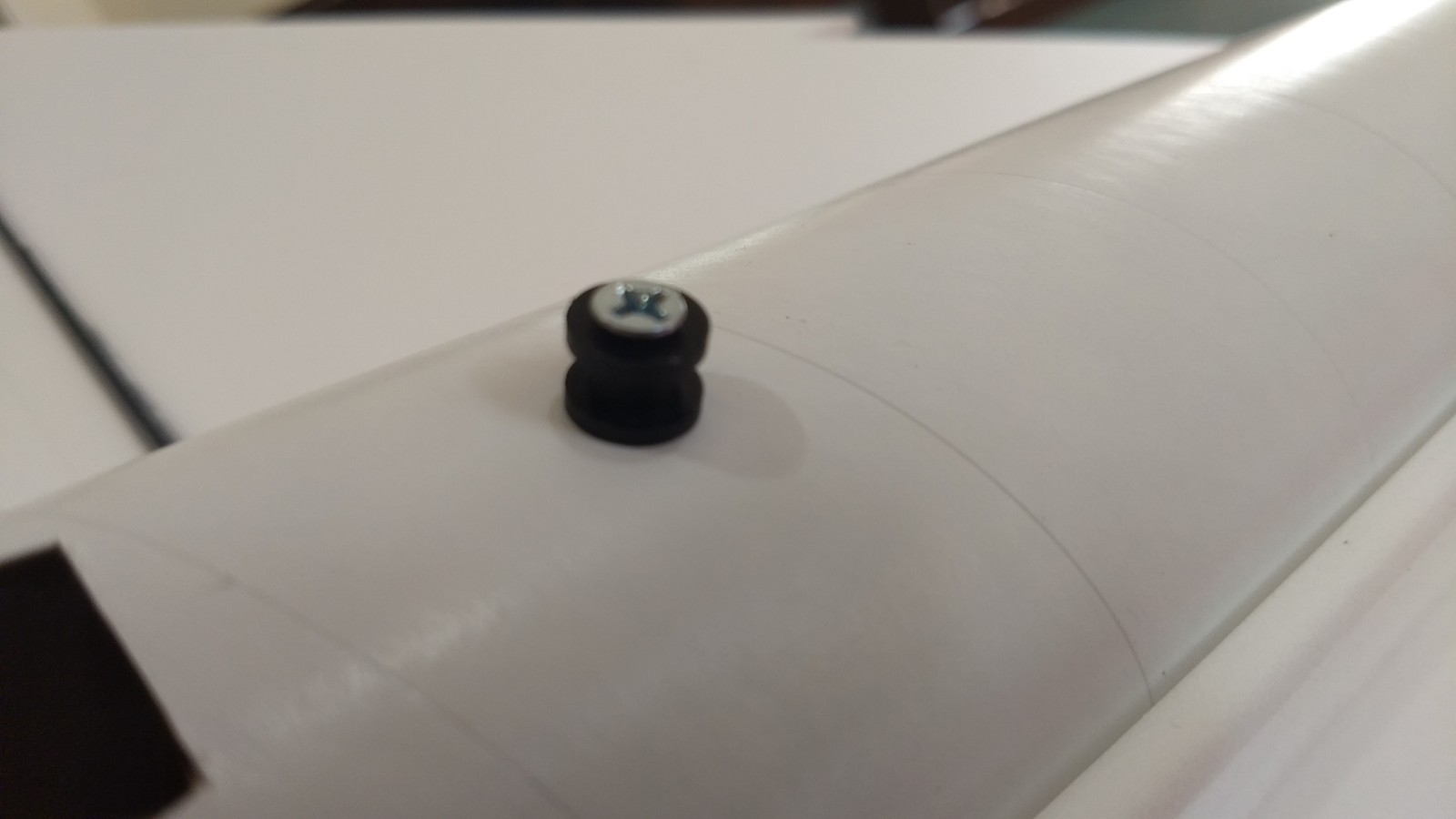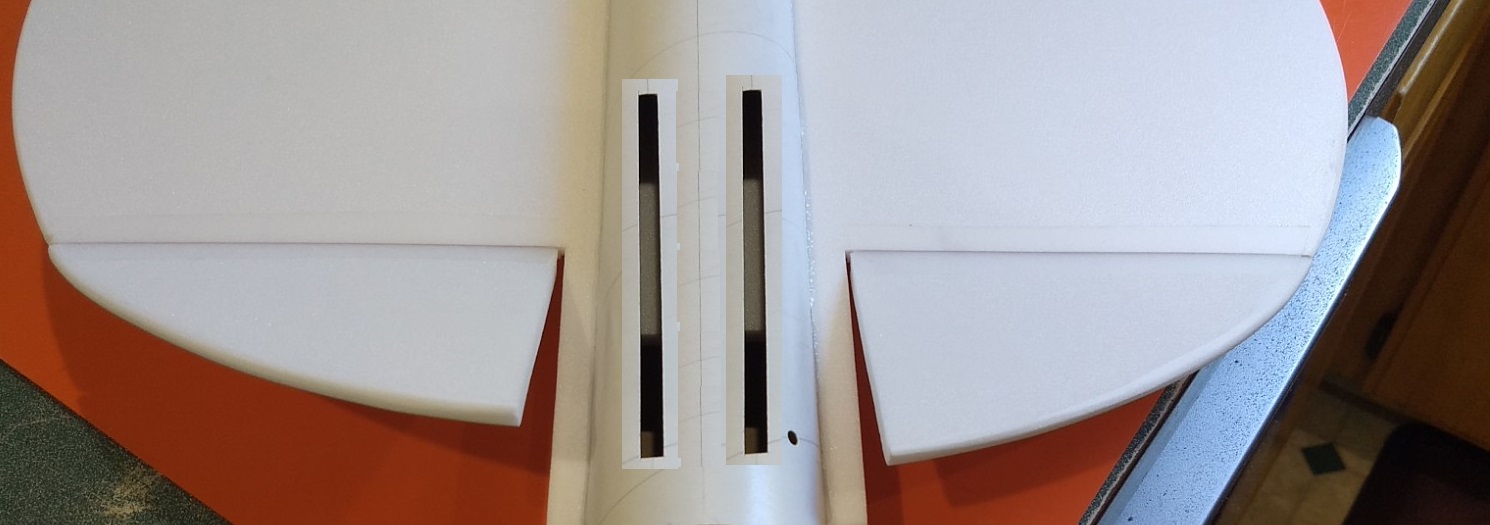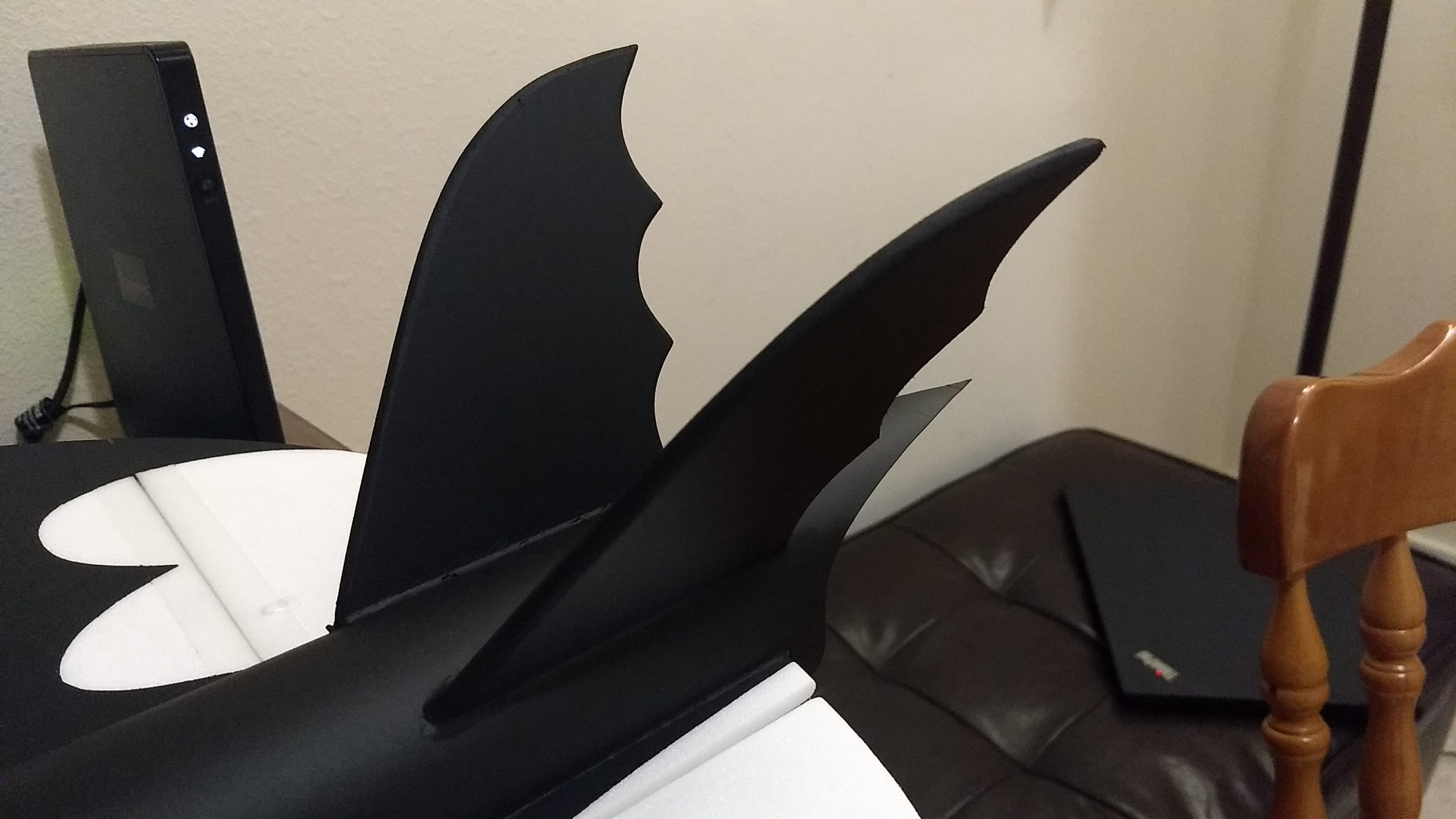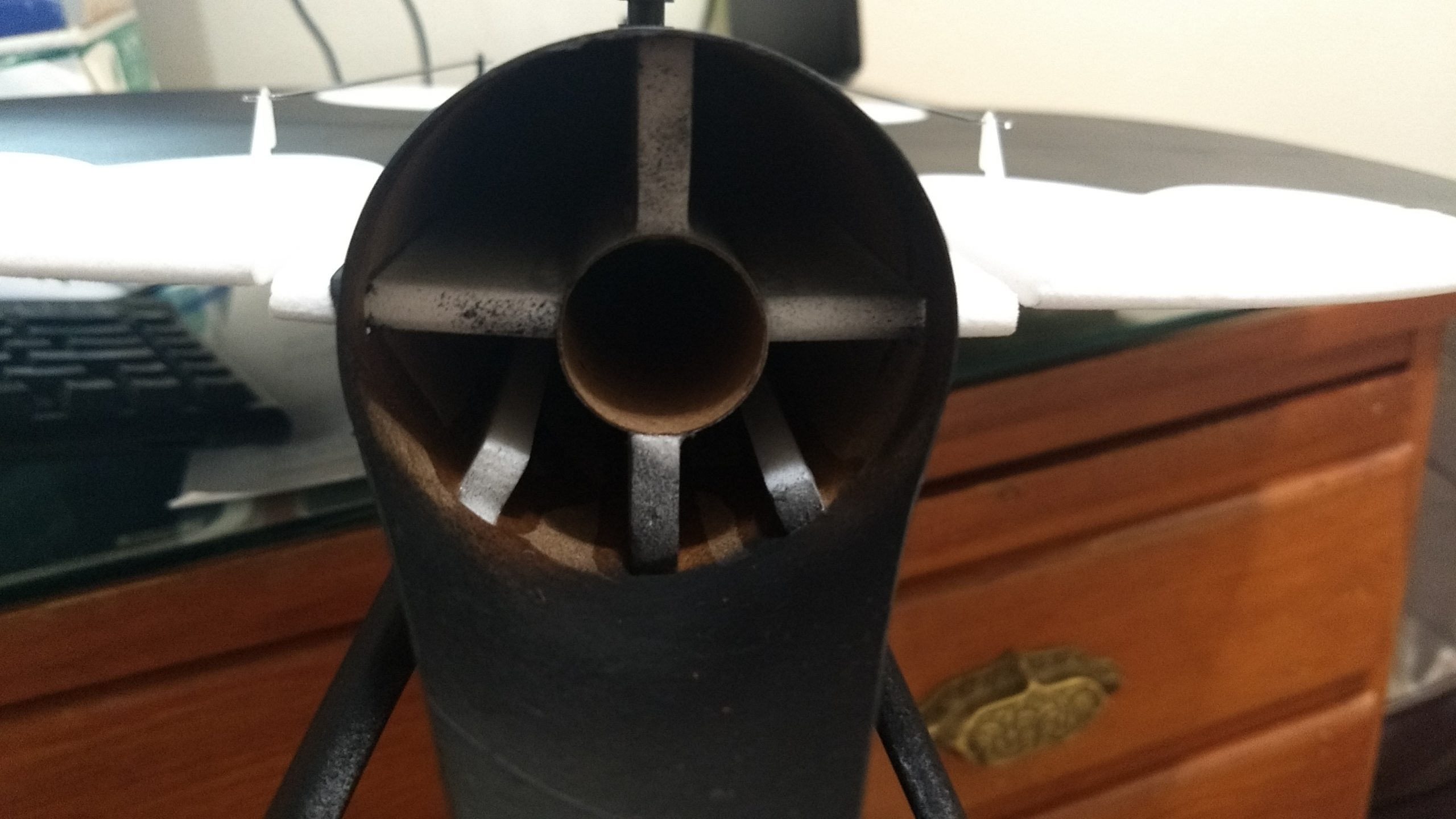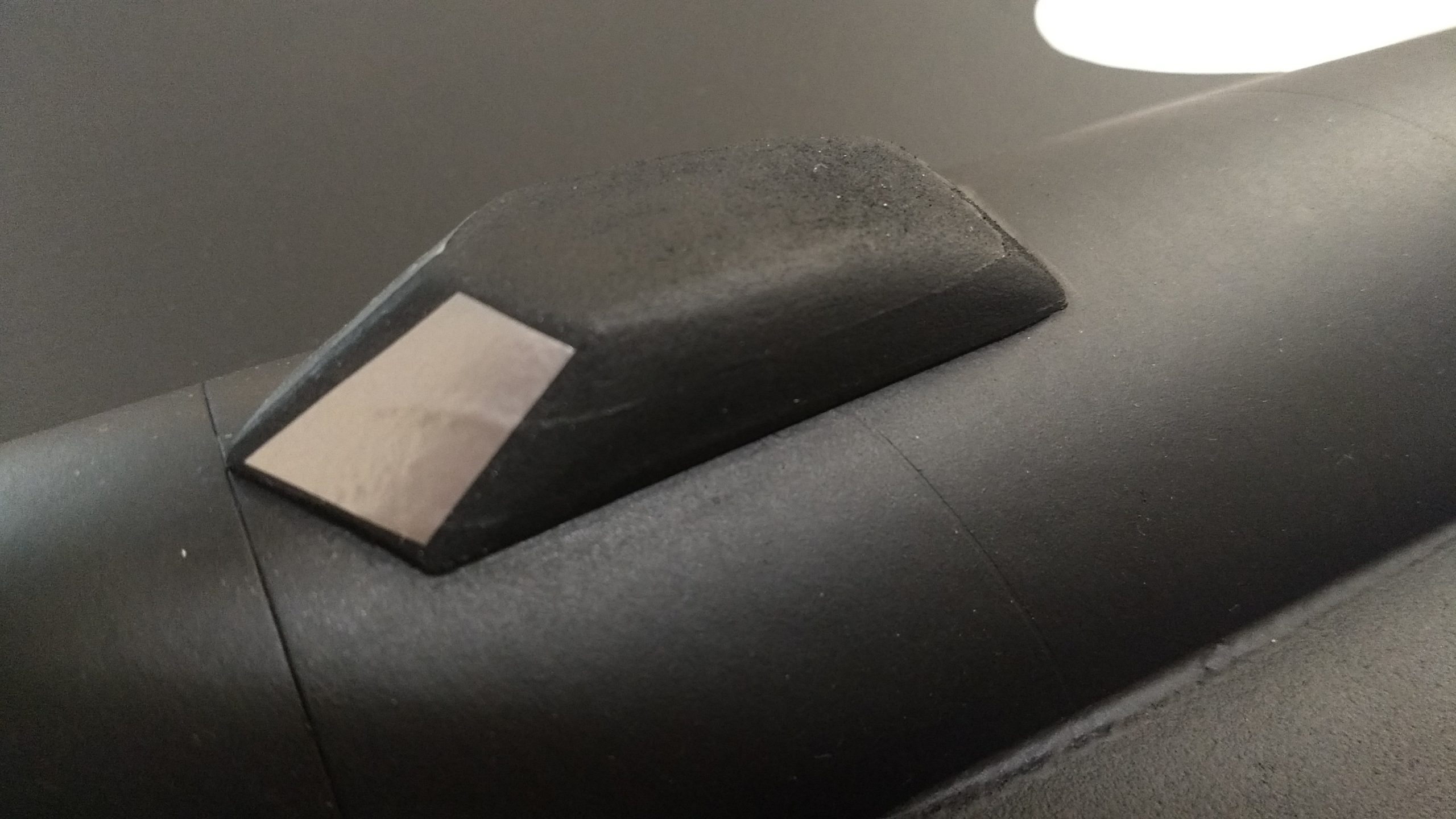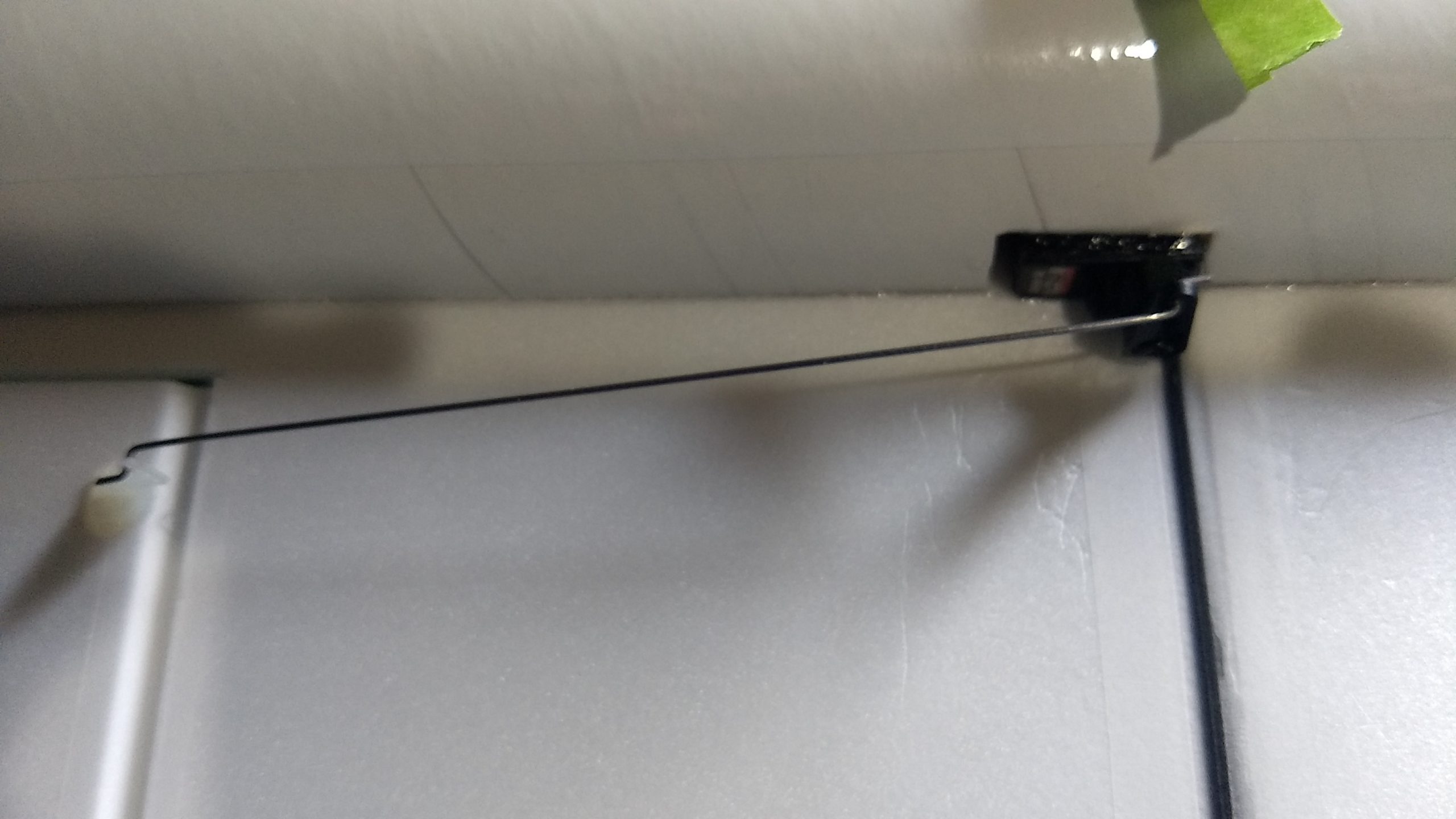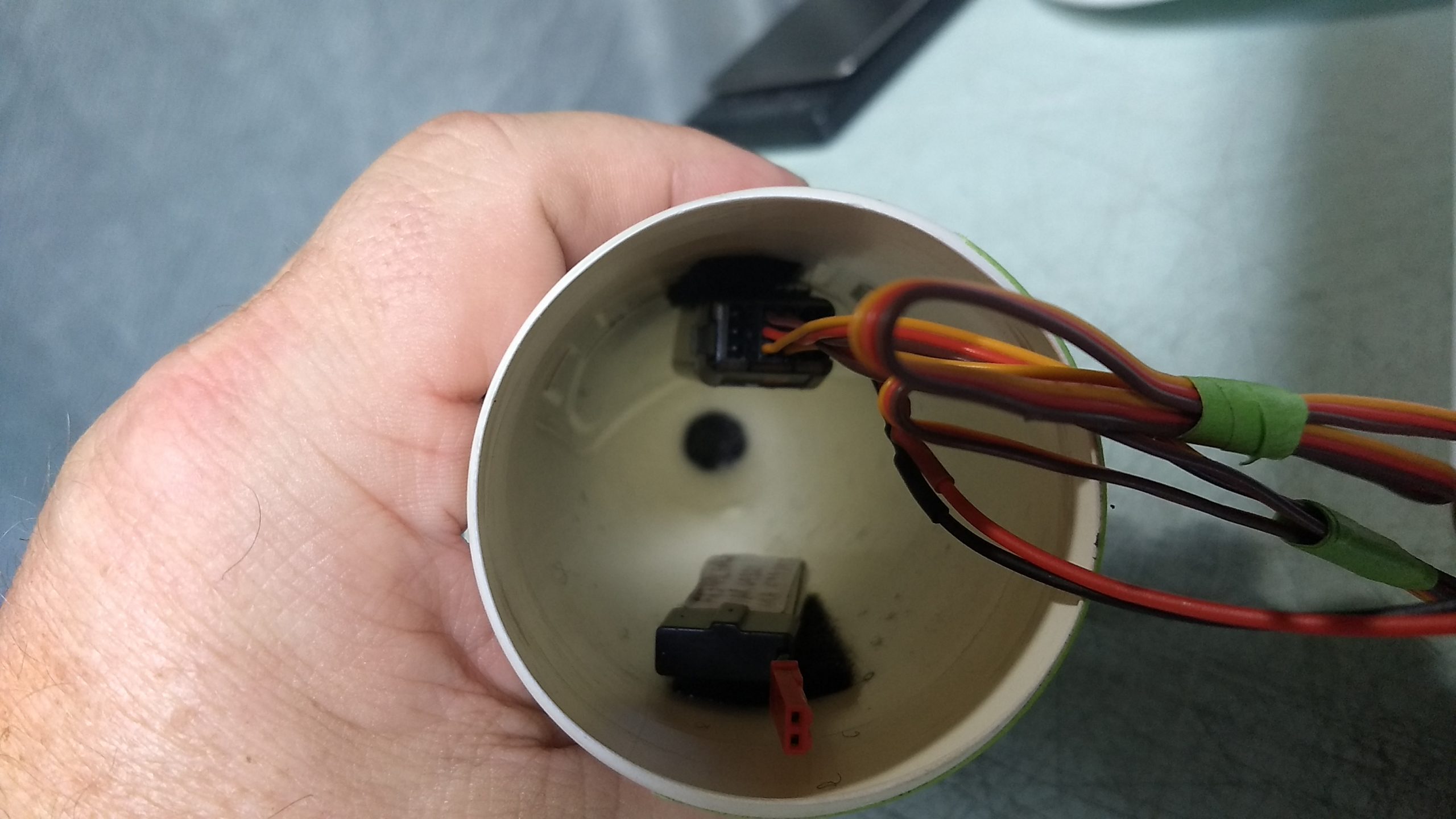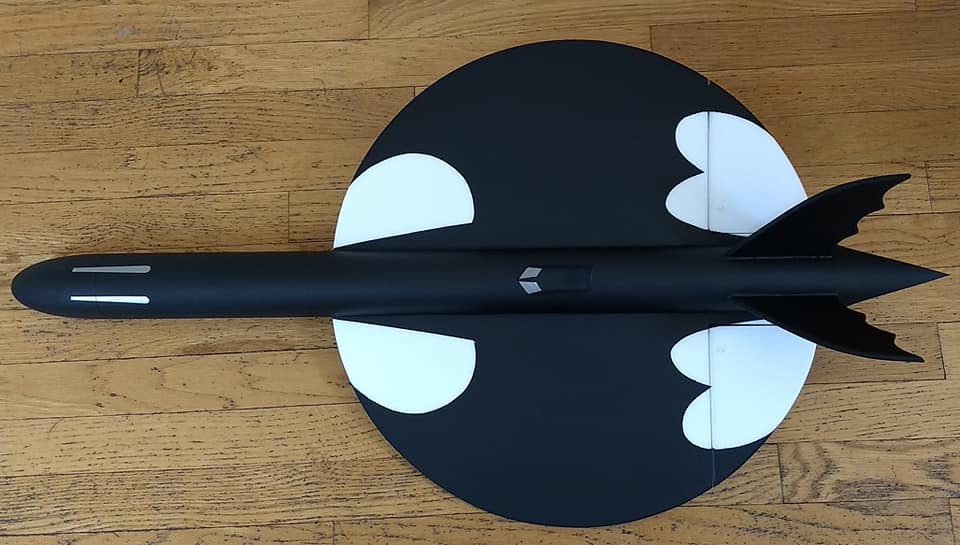
The Batplane RC Rocket glider kit: 36 long, 19″ wingspan, 11 oz rtf. Inspired by the Tim Burton Batman world, the kit features a pre-cut pointed body tube, disk shaped wing and a scalloped V tail It comes with a plastic nose cone, 2.6″ white tubing for the body, Depron wing and 6mm depron tail surfaces. The wing spar is pre-installed, control surfaces are pre-hinged, and the body tube is pre slotted for the vertical stabs and wing. Rail button holes are pre-punched. Please refer to the General information for all kits tab above, then read these instructions completely before starting assembly. Patterns for masking the wing for the characteristic bat logo can be downloaded, make sure to print them full size with no scaling/border HERE:
CG location for rocket flight: 15 5/8″ forward of the rear end of the wing.
Unpacking your kit:
The kits are packed to protect them in shipping, but the contents are fragile so unpack carefully. Carefully cut the tape holding the tubes in the box, then unwrap/lightly cut the plastic wrap to free the tubes, the spar may be packed in the tubes and the baggie with the little parts and nose cone will be in the tubes as well. Carefully cut the tape holding the cardboard wing protector in the box and carefully remove it, don’t pull hard or bend it. Then carefully cut the tape holding the cardboard top piece to the bottom. There may be some sticky tape holding the cardboard to the bottom cardboard piece, carefully peel it being sure not to bend anything. Once the top cardboard is free you can see the foam wing/tail parts, there are little fragile pieces in here, so unwrap carefully. It may be best to use an exacto to lightly cut the plastic wrap and carefully remove it without cutting into the foam. Make sure everything is free before you remove the pieces to avoid breaking anything. Kits contain one or two scrap pieces for repairs if you damage anything in construction or flight, just cut and patch in a spare piece of the foam if needed using foam safe CA+.
Welcome to the world of rocket boosted radio control gliders. This is not a model for a novice RC pilot, but anyone who is comfortable with RC flying of a medium speed model should be fine. Read through the instructions, look at the photos and be sure you understand the step before committing to cutting or glue.
Identify all pieces, the kit should contain:
1 wing
1 Nose Cone
2 vertical stabilizers
2 control horns/Pushrods
3 cockpit pieces
2 Body Tubes
1 coupler
Motor mount
2 13/16″ x 2.5″ wide strip to center the motor tube
Velcro(for battery and rx/bec attachment)
2 Rail buttons with t nuts/screws
Blenderm Tape
Lead weight
Notes before starting:
Foam safe CA+(Bob smith super gold + is good) is the only glue recommended for construction. You will also need foam safe accellerator to set the glue.
You may use 320 grit sandpaper and a sanding block to slightly round the edges of the foam if you prefer before gluing the wing and vertical stab in place. Do any sanding before assembly.
Assembly:
- Unfold the wing and glue the taped joint with CA+.
- Install the two rail buttons in the pre-punched holes in the slotted body tube.
- Glue the coupler into the front of the body tube, it should stop against the rail button t-nut and go in about halfway.
- Glue the other tube onto the coupler so that the arrow marks on the bottom of both tubes are aligned, the tube is cut by hand and if you line up the marks the seam will be perfect.
- I soaked the rear of the body tube that is pointy with CA to help reinforce it and protect it from handling damage.
- Finish cutting the wing slot through the rear body tube and coupler on the lines marked, take your time and make mutiple passes.
- Glue the 2.5″ long foam strips on the motor tube using foam safe CA+ on two of the opposing pencil lines. This helps center the motor tube in the body tube once you insert it.
- Test fit the wing in the wing slot, sand or trim as needed so it does not drag on the wing and make grooves in the foam. Insert the wing. Make sure the wing is centered, look at the spacing of the elevons at the rear and look into the body tube at the front for the center mark, and glue in place.
- Glue the vertical fins into place and make sure the vertical fins are at a similar angle to the wing. Apply a light filet to both sides of the vertical stabs on the inside and outside of the body tube.
- Test fit the motor mount into the body tube/wing slot. Make sure it fits, or sand the foam tabs lightly. Glue the motor tube in place, it will inset about 3/4″ from the end of the body tube. Put a fillet on each side of the motor mount tabs and fuselage, Make sure the vertical stab stays vertical.
- Note that there should be two holes on each control surface. Apply CA+ to each of the control horns and press them in place in the underside of each control surface into the pre-made holes. The control horn holes face forward and the pushrod should be closest to the body tube. Apply a fillet around the control horn on the the prongs on the bottom of the wing to lock them in place.
- Glue the cockpit pieces together, then sand the leading edges at an angle. Round the rest of the edges slightly. Wrap some sandpaper around the body tube and lightly sand the bottom of the cockpit till it matches the body contour and then glue in place about 5″ ahead of the vertical stabs.
the basic construction of the airframe is complete.
Radio Installation
Note: Your radio needs to be configured for Delta mixing, this means that the servo arms will move the same direction during elevator stick movement and opposite for aileron stick movement. Connect your servos to the receiver one in the aileron connection and one on the elevator connection and apply power. Use a servo arm at least 9/16” long and with holes small enough that there won’t be slop with the pushrod wire when installed. I use the hole furthest out on the servo arm, to maximize movement. On some servos there are a long two-ended servo arm, you can trim off one end and use that arm to get sufficient length. Zero out any trim settings on the transmitter.
- Connect each servo to a pushrod. If the pushrod is too tight, you can use twist an X-Acto knife in the servo arm hole to make it larger, but be careful and do not make it too large. The servo should be next to the body tube on the bottom of the wing, with the servo electrical wire pointing forward and the servo arm pointing toward the wing tip. Hold each servo in place so that the control surfaces are centered. With the model right side up look at it from the rear. Moving the transmitter stick back(up elevator) should move both elevons up. Moving the transmitter stick to the right should move the right elevon up and the left elevon down. If you can’t get the servo reversing to give you the right polarity try swapping aileron/elevator inputs to the receiver or turning the servos over and swapping the servo arms to the other side of the output shaft. If that is correct, continue.
- Mark where the servo will sit next to the body tube with the control surface at neutral and the radio on, mark on the body tube and cut a pocket to fit the servo.
- Attach a 18″ or longer servo extension to each servo then route wire through the pocket to the front of the body tube and re-Attach the servo wires to the receiver and make sure they are going the right direction.
- Insert the servo in the pocket most of the way, make sure the control surfaces are neutral then apply glue around and underneath the servo making sure not to get any on the output shaft.
- Make sure the control surfaces are centered, use trims if needed to adjust. Now measure the control surface movement. Full elevator movement should be 1″ in each direction, aileron movement should be 5/8″ in either direction. Note these look like a lot of movement but the surface is curved so the deflection at the inboard tip is a lot but not so much outboard. All measurements at the inboard surface tip.
- If you have a flap/elevator mix you can program up elevator trim for boost and glide. If you can’t set the up elevator trim to a switch on your radio you’ll have to manually put in boost and glide trim using the trim tabs which is hard to do while flying the model. My model needed slight down trim for boost and about 1/2″ to 5/8″ of uptrim for glide.
- Use the included Velcro to attach the receiver and battery as far inside the nose cone as I could to help reduce nose weight needed.
- If you choose to paint your model use ONLY Testors or Model master enamel paints, this will add approx 1/2 ounce to the flight weight, be sure to balance your model after painting as it will be more tail heavy with paint. You can download the masking guides from the above link and cut them out of a stiff paper, then use them to mark on the wing using a sharpie pen for the masking outline, then mask as you normally would, mask over the rail buttons as well. Spray the model flat black. Once dry, remove the masking. I used a silver sharpie pen for cockpit and nose gun accents.
- Install the receiver and battery
- Insert your heaviest loaded rocket motor into the motor mount
- Support the model upside down at the balance point indicated for boost. Glue as much lead weight in the nose as needed to balance it. Do not try to fly the model too nose or tail heavy. Remember, a nose heavy model flies poorly, a tail heavy model flies once.
- Flying: See the General Instruction link at the top for flying instructions. Be ready on the first few flights to keep the model straight till you have the trims set perfectly for boost and glide.
The photos below are for reference but please read through and follow the steps in order as the text is written as not all steps are shown.
- Glue the wing at the taped joint and lay flat till the glue sets. Edges of the wing shown rounded after sanding.
- install the front and rear rail buttons
- Joint the two tubes with the coupler keeping the arrow marks on the bottom of the two tubes aligned. Once set finish cutting the wing slot in the rear tube/coupler on the lines marked.
- Test fit and then glue the wing in place keeping front and rear centered.
- Glue the two motor centering strips on opposite sides of the motor tube.
- Glue the vertical stabs in place
- test fit then insert engine mount till it stops and glue in place.
- Glue cockpit pieces together and then shape and fit/glue to the body tube.
- Install the two pushrods/horns, note the pushrod will be closest to the center of the model on each side.
- add glue to the prongs on top of the surfaces to lock the horns in place.
- Cut servo pocket
- glue servo in place with control surface neutral and servo wire/extension routed to the front of the model.
- attach the receiver and battery inside the nose cone with included velcro.
- Completed Model
- Completed model Top View

